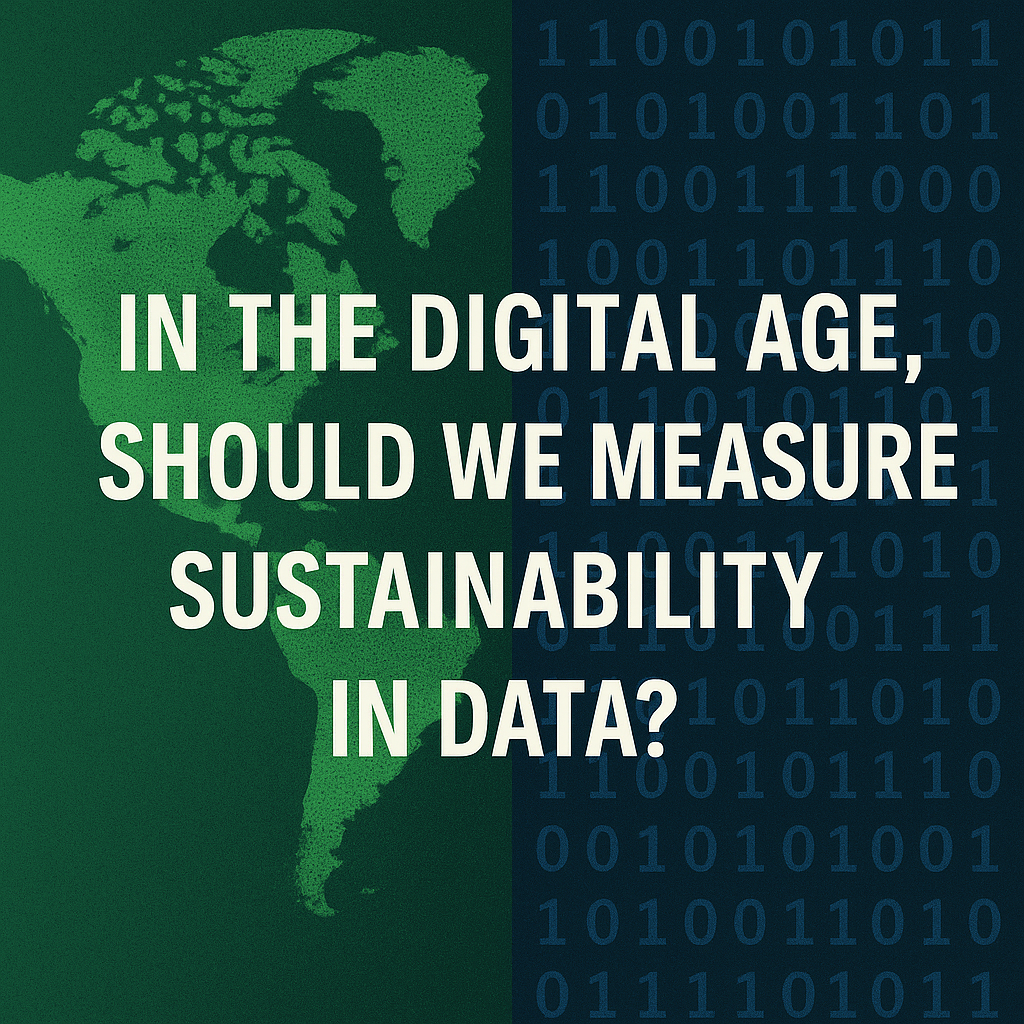
As the world becomes increasingly digital—with cloud computing, AI, cryptocurrency, streaming, and smart cities rapidly expanding—it’s time to ask a new kind of climate question: should our sustainability metrics evolve beyond just energy and carbon?
Every click, stream, and calculation generates digital activity. And while each action may seem small, the scale at which our digital infrastructure operates is staggering. This raises a new concept many are just beginning to understand: digital emissions or “data pollution.”
For decades, carbon emissions have been the gold standard for measuring environmental impact. But as we look toward the 2030s. There’s a growing awareness that data, once seen as invisible and harmless, must now be factored into the sustainability equation. Digitization has delivered enormous environmental benefits.
Every click, stream, and calculation generates digital activity. And while each action may seem small, the scale at which our digital infrastructure operates is staggering. This raises a new concept many are just beginning to understand: digital emissions or “data pollution.”
For decades, carbon emissions have been the gold standard for measuring environmental impact. But as we look toward the 2030s. There’s a growing awareness that data, once seen as invisible and harmless, must now be factored into the sustainability equation. Digitization has delivered enormous environmental benefits.
Remote meetings reduce travel. E-books save paper. Smart grids powered by AI lower energy waste. In fact, digital solutions have already helped avoid billions of tons of emissions worldwide. But like every form of progress, it comes with a cost.
Currently, data centers consume around 2% of global electricity, and that figure could rise to 8% or more by 2030, especially as AI, edge computing, and IoT devices continue to grow. While these technologies are vital for modern life—enhancing agriculture, healthcare, mobility, and more—they also introduce new challenges around energy efficiency, emissions, and scalability.
The key question is: how do we grow our digital world without growing our emissions alongside it?
Thankfully, solutions are emerging. Major tech companies are shifting to renewable-powered data centers. Developers are building energy-aware software, adopting compressed file formats, and designing leaner algorithms that use less energy while doing more. These improvements could help reduce total digital energy consumption by 20–30% by the end of this decade.
But sustainability in the 2030s won’t just be about solar panels, electric cars, or even net-zero pledges. It will be about algorithmic efficiency, green code, and intelligent digital systems—the invisible architecture that powers modern life.
Data is not the problem-Wasteful design, unchecked scale, and a lack of digital accountability are.
In this new era, sustainability isn’t about avoiding data—it’s about mastering it.
Importantly, Ozerra is built with sustainability in mind from the ground up. We minimize data storage and optimize processing to reduce digital emissions, ensuring that our solution doesn’t contribute unnecessarily to the problem it’s solving. Our app empowers consumers to be part of the solution—making sustainable living easier, measurable, and ultimately, more rewarding.
Data is no longer just a byproduct of digital activity; it’s the backbone of global infrastructure, economic systems, and even environmental monitoring itself.
Let’s be clear: digitization has already saved billions of tons of emissions.
Replacing physical meetings with Zoom? Less travel.
E-books instead of printed textbooks? Less paper.
Smart grids powered by AI? Massively optimized energy usage.
Let’s be clear: digitization has already saved billions of tons of emissions.
Replacing physical meetings with Zoom? Less travel.
E-books instead of printed textbooks? Less paper.
Smart grids powered by AI? Massively optimized energy usage.
Currently, data centers consume around 2% of global electricity, and that figure could rise to 8% or more by 2030, especially as AI, edge computing, and IoT devices continue to grow. While these technologies are vital for modern life—enhancing agriculture, healthcare, mobility, and more—they also introduce new challenges around energy efficiency, emissions, and scalability.
The key question is: how do we grow our digital world without growing our emissions alongside it?
Thankfully, solutions are emerging. Major tech companies are shifting to renewable-powered data centers. Developers are building energy-aware software, adopting compressed file formats, and designing leaner algorithms that use less energy while doing more. These improvements could help reduce total digital energy consumption by 20–30% by the end of this decade.
But sustainability in the 2030s won’t just be about solar panels, electric cars, or even net-zero pledges. It will be about algorithmic efficiency, green code, and intelligent digital systems—the invisible architecture that powers modern life.
Data is not the problem-Wasteful design, unchecked scale, and a lack of digital accountability are.
In this new era, sustainability isn’t about avoiding data—it’s about mastering it.
Importantly, Ozerra is built with sustainability in mind from the ground up. We minimize data storage and optimize processing to reduce digital emissions, ensuring that our solution doesn’t contribute unnecessarily to the problem it’s solving. Our app empowers consumers to be part of the solution—making sustainable living easier, measurable, and ultimately, more rewarding.
Zoomed out of item.
bdr
